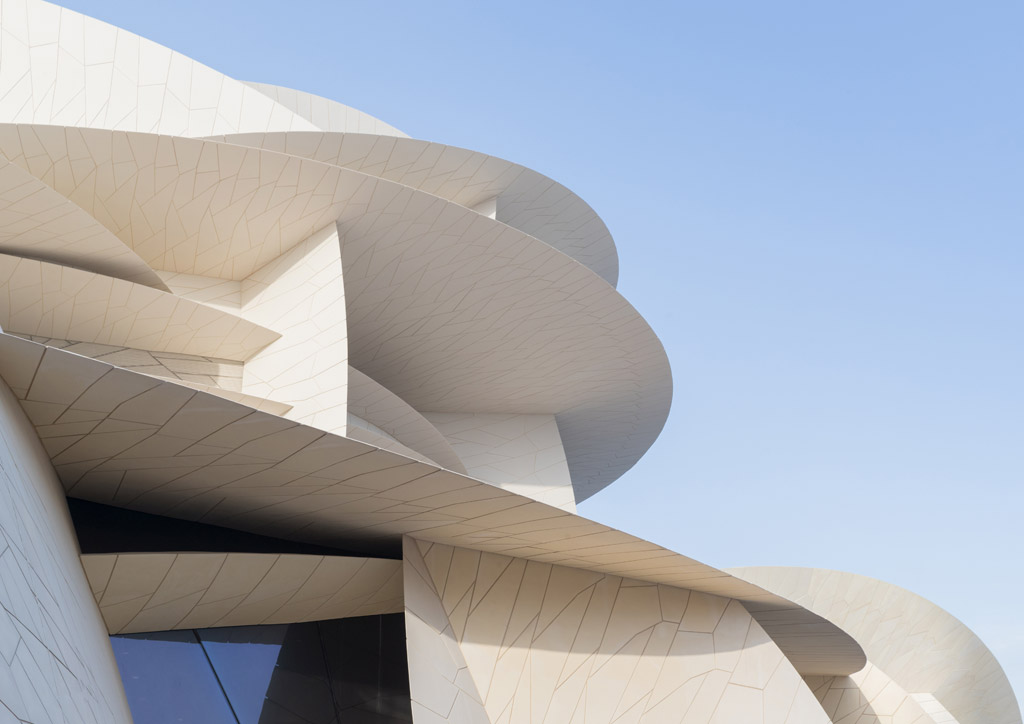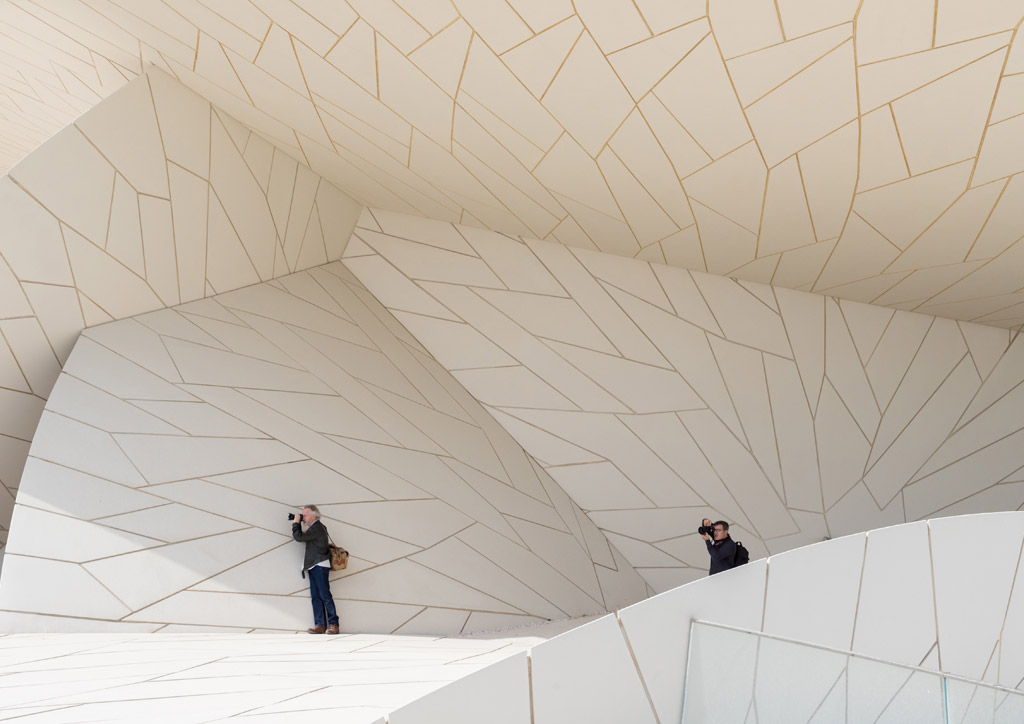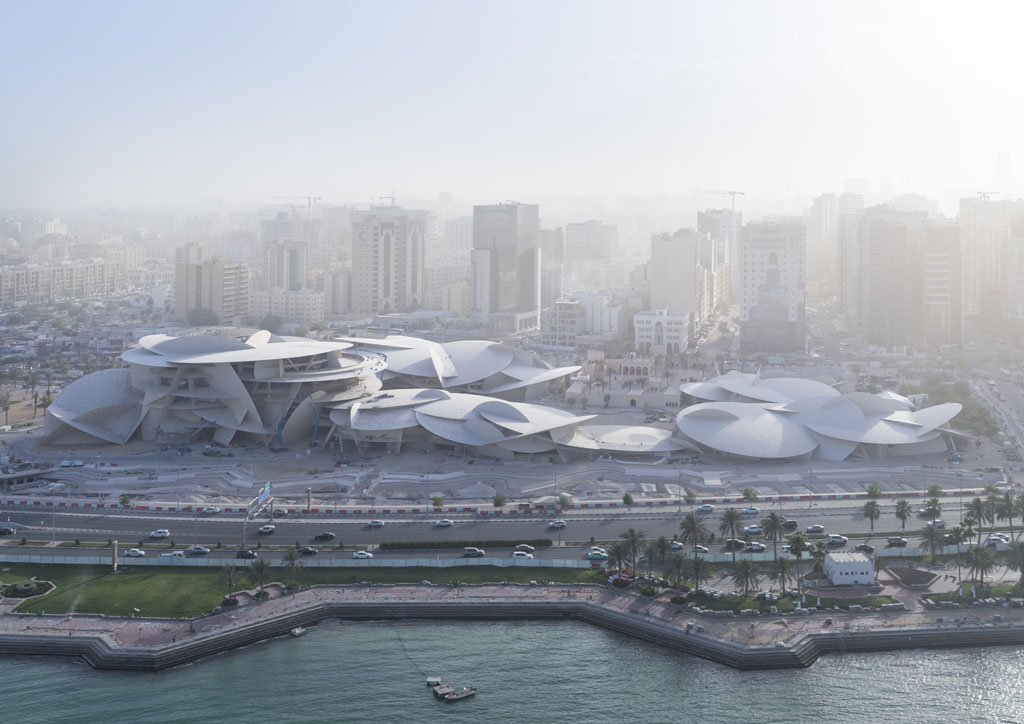
National Museum of Qatar designed by Jean Nouvel opens
Under the patronage of Sheikh Tamim bin Hamad bin Khalifa Al Thani, the National Museum of Qatar (NMoQ) was unveiled to the public last March 28, 2019, welcoming the world to an unparalleled immersive experience housed in a new architectural masterpiece by Jean Nouvel.
The museum’s gallery path is a journey through a series of unique, encompassing environments, each of which tells its part of the story of Qatar through a special combination of architectural space, music, poetry, oral histories, evocative aromas, archaeological and heritage objects, commissioned artworks, monumentally-scaled art films, among others. It has 11 permanent galleries that take visitors from the formation of the Qatar peninsula millions of years ago to the nation’s exciting and diverse present. Giving voice to the Qatar’s rich heritage and culture, NMoQ will serve as a hub for discovery, creativity, and community engagement, providing diverse educational opportunities.

NMoQ embraces as its centerpiece the restored historic Palace of Sheikh Abdullah bin Jassim Al Thani, son of the founder of modern Qatar. Sheikha Al Mayassa bint Hamad bin Khalifa Al Thani, the chairperson of Qatar Museums, said, “The opening of the National Museum of Qatar is a source of immense pride for our country, and an exceptional moment for engaging with people from around the world. The extraordinary schedule of inaugural activities draws together outstanding artists, architects, thinkers, and cultural leaders from Qatar and the international community, vividly demonstrating how the National Museum of Qatar will always be a dynamic resource in its programs as well as its exhibitions. Culture connects people, and with this new museum we believe we have created an exceptional platform for dialogue.”

In designing the building that makes these experiences possible, Jean Nouvel drew inspiration from the desert rose, a flower-like formation that occurs naturally in the Gulf region when minerals crystallize in the soil just below the surface of a shallow salt basin. Described by Nouvel as “the first architectural structure that nature itself creates,” the desert rose became the model for the museum’s complex structure of large interlocking disks of different diameters and curvatures—some vertical and constituting supports, others horizontal and resting on other disks, which surround the historic palace like a necklace.
The Baraha, a central court that sits within the ring of galleries serves as a gathering space for outdoor cultural events. On the outside, the museum’s sand-colored concrete harmonizes with the desert environment, so that the building appears to grow out of the ground and be one with it. Inside, the structure’s interlocking disks continues, creating an extraordinary variety of irregularly shaped volumes. “To imagine a desert rose as a basis for design was a very advanced idea, even a utopian one,” says Nouvel.

To construct a building with great curved disks, intersections, and cantilevered angles—the kind of shapes made by a desert rose—the team behind this structure had to meet enormous technical challenges. This building is at the cutting edge of technology, like Qatar itself. As a result, it is a total object: an experience that is at once architectural, spatial, and sensory, with spaces inside that exist nowhere else. The cantilevered disks, which provide natural shade, are among the elements of the design that have enabled NMoQ to become the first museum to receive both LEED Gold certification and a four-star sustainability rating from the Global Sustainability Assessment System. ![]()
READ MORE: ‘Root Bench’ by Yong Ju Lee seamlessly merges design with nature


